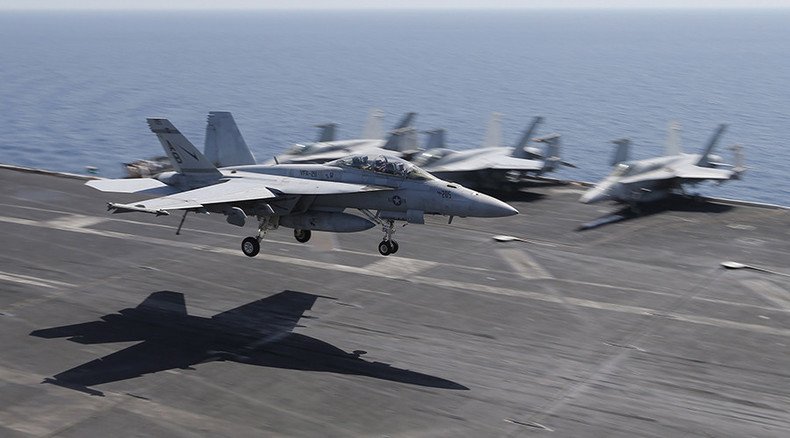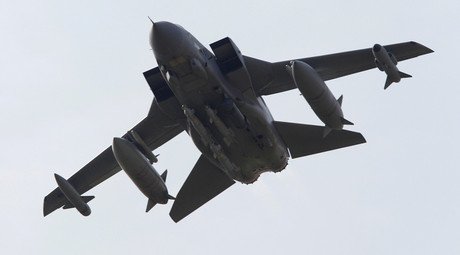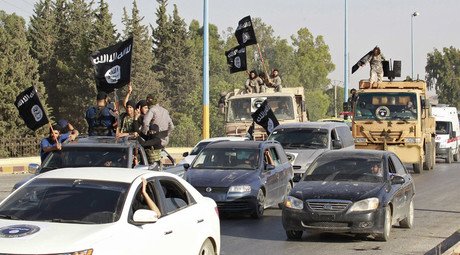Taking sides in Syrian civil war? Obama authorizes airstrikes ‘to defend’ US-trained rebels

The US president has reportedly authorized the Air Force to protect Syrian rebels trained by Washington to fight against Islamic State by bombing any force attacking them, including Syrian regular troops.
Thus the US may become involved in the Syrian civil war on the rebel side.
The change was first reported by US officials speaking on condition of anonymity with the Wall Street Journal Sunday. The first airstrikes to protect American trainees in Syria have already taken place on Friday, July 31, when the US Air Force bombed unidentified militants who attacked the compound of the US-trained rebels.
So far the fighter jets of the anti-Islamic State (IS, formerly ISIS/ISIL) US-led coalition have been bombing jihadist targets in Syria’s north and the national air defense units were turning a blind eye to foreign military aircraft in their airspace.
Obama’s Syria strategy review focuses on ISIS, Assad govt – report http://t.co/9ZTeQuHULIpic.twitter.com/0cAC5u44df
— RT America (@RT_America) November 13, 2014Meanwhile, President Barack Obama’s decision reportedly involves inflicting airstrikes against any force that attacks the Syrian rebel armed force being trained by American instructors and armed on money from the US budget, with the officially-proclaimed aim of dealing with the advances of IS.
“For offensive operations, it’s ISIS only. But if attacked, we’ll defend them against anyone who’s attacking them,” a senior military official told the Wall Street Journal on Sunday. “We’re not looking to engage the regime, but we’ve made a commitment to help defend these people.”
Neither the Pentagon nor the White House officially commented on the decision about the new broader rules of engagement, Reuters reports. So far the US has been avoiding direct confrontation with the forces of President Bashar Assad.
READ MORE: Turkey attacks Kurdish militia & ISIS positions – PM's office
“We won't get into the specifics of our rules of engagement, but have said all along that we would take the steps necessary to ensure that these forces could successfully carry out their mission," said White House National Security Council spokesman Alistair Baskey, stressing that so far only US-trained forces have being provided with a wide range of support, including “defensive fires support to protect them.”
The Kremlin said that US airstrikes against Syrian troops would further destabilize the situation.
Moscow has “repeatedly underlined that help to the Syrian opposition, moreover financial and technical assistance, leads to further destabilization of the situation in the country,” Kremlin press secretary Dmitry Peskov said, adding that IS terrorists may take advantage of this situation.
The US rebel training program launched in May implies military instruction of up to 5,400 fighters a year, Reuters reports. The program is reportedly so hard for the trainees that some candidates are being declared ineligible from the start.
According to WSJ, Pentagon has been planning to have 3,000 fighters trained by the end of 2015, but finding applicants without ties to hardline groups turned out to be a heavy task. Reportedly, so far fewer than 60 fighters have been trained.
There are now multiple groups taking part in the Syrian civil war, as Assad’s troops are fighting not only the rebels, but also other militant groups, such as Al-Qaeda's Syrian wing, the so-called Al-Nusra Front, and IS. The militant groups, in turn, are fighting not only Assad’s troops, but each other too.
“We recognize, though, that many of these groups now fight on multiple fronts, including against the Assad regime, (Islamic State) and other terrorists,” said Pentagon spokeswoman Commander Elissa Smith, stressing though that “first and foremost” the US focuses on combating IS.
Talk of political solution to #Syria crisis is ‘hollow, meaningless’ – Assad http://t.co/2okEizpnpKpic.twitter.com/5YNb4ipbxU
— RT (@RT_com) July 26, 2015However, as a result the US warplanes may end up bombing government troops under the command of a legitimate president, Assad, an act of aggression against a sovereign country that only the UN Security Council could authorize.
September will mark one year that the US-led coalition has been bombing positions of the Islamic State in Iraq and Syria. Although already in November 2014 there were reports that the anti-IS campaign could be nothing else but a move to allow the US military to oust President Assad through less direct means.
In 2013, Damascus narrowly escaped a US-led invasion after Russia brokered an agreement for Syria to hand over its chemical weapons to the international community.
At the time, UK Prime Minister David Cameron lost a bid in the House of Commons to ally British forces with the US military, but now Royal Air Force is bombing positions of IS along with the Americans.
READ MORE: UK pilots authorized to bomb Syria without democratic sanction – Reprieve
An airstrike of the anti-IS coalition on Assad troops might become a very dangerous precedent and cause a direct military conflict between Washington and Damascus, something that diplomats have manage to avoid since the beginning of the Syrian civil war.














